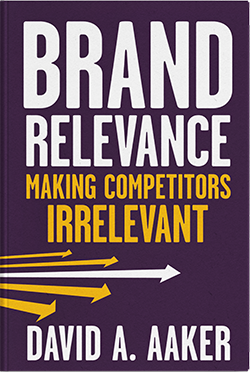BLOG
How to Measure Return on Brand Investment
Research proves that healthy brands benefit companies by increasing its stock price and winning new customers.
Many CMOs are challenged with the question, “Where is the quantitative proof that brand investments pay off?” Put simply, return on brand investment is the measure of your brand’s performance, gauged by the strategic movement and growth of your brand. Determining ROI is difficult, as looking at your people, IT and organizational culture do not provide the kinds of quantitative evidence you need in this case. Thus, organizations must find other ways to measure ROI.
How to Determine Return on Brand Investment
To help brands accurately determine if their investments were justified, Robert Jacobson and I conducted two studies in which the impact of brand equity on stock return was measured using time series models. The first database included nine high-tech firms such as Apple, Dell, HP, Microsoft and Oracle.
Quarterly data over 8 years provided 250 observations. Brand equity was based on an attitude measurement (percent having a positive view minus the percent having a negative one). The model compares the impact on stock return on two variables: changes in accounting ROI during a prior period, and changes in brand equity also during a prior period.
We know that accounting ROI impacts stock return from finance research and observation of the stock market. The impact of brand equity on stock return was shown to be about 70% of the impact of accounting ROI.
The second database included 34 firms such as AMR, AT&T, Citicorp, Exxon, Hershey and Ford. Brand equity was based on an annual survey of consumers who evaluated each brand along an 11-point perceived quality scale. There were 102 data points.
Using a similar time series model, it was found that brand equity had nearly the same impact as accounting ROI (23 vs. 25). When added to the model, advertising impact was insignificant and did not change the results (though it could have impacted indirectly by enhancing brand equity). So, we can rather definitively say that, on average, brand equity matters. It improves brand value through impact of stock return for brands.
Calculating Brand Value
We suspect that brands driving sales for a business within a firm should be similarly impactful on profit streams going forward. Second, the efforts to evaluate a brand provide evidence that brands have asset value. A brand value is obtained by:
“Value of a Business X Percent of That Value Due to Brand = Brand Value”
A knowledgeable team estimates the percent of value due to brand subjectively. They reflect on how much of the business value is due to the brand versus intangible and tangible assets. This estimate, even with a team of knowledgeable people, will be rather crude but it does provide an indicator of a brand’s asset value. It also provides a perspective on brand value that frames the quantitative discussion.
The Impact of Branding on Sales & Margins
What would happen to sales and margin if the brand were lost or degraded? The answer is usually quite sobering. The percent of a business assigned to a brand ranges from:
- Around 10% to 15% for brands like GE, Accenture, Caterpillar, and Chevrolet
- 40% to 50% for brands like Google, Nike and Disney
- Over 60% for brands like Jack Daniel’s, Coca-Cola and Burberry
Even 15% can generate a huge value. While these estimates are less than precise, they are instructive and provide evidence that, on average, brands matter. They also provide a frame of reference.
ROI of Branding Example: Toyota Corolla and Chevrolet Prizm
A nine-year experiment was conducted that proved very informative. From 1989 to 1997, a car was made in the MUMMI automobile plant in Fremont California that was marketed as the Toyota Corolla and the Chevrolet Prizm (or GEO Prizm for part of the time). This car had virtually the same design and was made in the same plant by the same people. It should therefore have the same price, sales and ratings of owners and experts. But it didn’t.
The Corolla brand was priced 10% higher, depreciated less over time, and had much higher sales than the Prizm. Most remarkable of all, consumers and experts both gave it higher ratings. A defect for the Corolla was excused as “one of those things” but a defect from the Prizm confirmed what was expected from a new Chevrolet compact car.
The only real difference between the two cars was the brand. Toyota Corolla was introduced in 1968 into the U.S. and had long been one of the leading brands in the marketplace. The Prizm was a new brand. Further, Toyota had a higher reputation for innovation and quality than Chevrolet. As a result, Toyota Corolla had higher awareness and credibility (the elements of relevance) plus higher perceptions of quality and features. These brand equity elements explain much of the differences in price and sales.
FINAL THOUGHTS
Brands matter, but their value is difficult to quantify. It requires different time periods and/or different markets in which brand equity has experienced significant change. Those contexts are not usually easy to come by. In the absence of experimental or statistical evidence, we are back to conceptualizing the role of brand equity just as those justifying investments in people, IT and organizational culture do. But it is reassuring to know the solid evidence exists to support the general assertion that brand investments, on average, have been shown to pay off.
Learn more about how Prophet can help your business drive growth through brand strategy.



